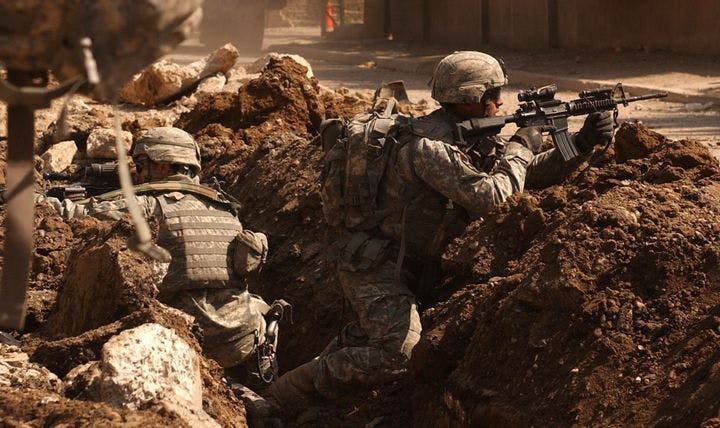Winter 2008
Safer Than ‘Nam
– The Wilson Quarterly
The new kind of war being fought in Iraq has resulted in much lower troop deaths compared to earlier conflicts, but woundings are still alarmingly high.
It didn’t take a creative Hollywood scriptwriter to manufacture the dangers of operating a flamethrower during World War II. Lumbering across the battlefield with 70 pounds of weaponry strapped on their backs, silhouetted like the cartoon character SpongeBob SquarePants as they sought to get close enough to incinerate their targets, the men who wielded these weapons experienced legendary death rates. Traditional flamethrowers are gone from the new kind of war being fought in Iraq, but fatality rates there are still vastly different from front to rear, mission to mission, and rank to rank, write Emily Buzzell, a graduate of the University of Pennsylvania now serving with AmeriCorps, and Samuel H. Preston, a demographer on the university’s faculty.
Overall, the death rate of military personnel in Iraq is about four per 1,000 per year, roughly three times that of Americans of similar age at home. The Vietnam War mortality rate among American troops was nearly 22 per 1,000, five times that for the war in Iraq. The ratio of dead to wounded in Iraq is only about a third of what it was in Southeast Asia because wounded soldiers get faster and better care.
Reflecting the differences in exposure to combat, the Marine Corps death rate is double that of the Army, nine times higher than the Navy’s, and 23 times higher than that of the Air Force. Among all servicemembers, the greatest danger in the war is faced by Marine lance corporals.
Active Army forces are three times more likely to die per deployment than are members of the Army Reserve. But Marines are at very high risk regardless of whether they are active-duty members or reservists.
Consistent with their official exclusion from primary combat positions, women have a mortality rate one-sixth that of men. Largely as a consequence of their lower rank, younger troops are more likely to die in the line of duty than older ones.
Hispanics face a higher risk of death in Iraq than non-Hispanics. Blacks face less than whites. Part of the reason may be that they are overrepresented in lower-risk categories: 19 percent of blacks in Iraq are women, compared with nine percent of nonblacks, and seven percent are Marines, compared with 11 percent of nonblacks, according to Buzzell and Preston.
Deaths in Iraq—2,706 at the time the authors compiled their data and 3,894 on December 19, 2007—are rare in comparison to woundings. From 2003 to the end of 2006, one of every 31 U.S. troops serving in Iraq was wounded. The pattern of woundings, Buzzell and Preston say, is quite likely to be the same as the demographics of death.
* * *
THE SOURCE: “Mortality of American Troops in the Iraq War” by Emily Buzzell and Samuel H. Preston, in Population and Development Review, Sept. 2007.
Photo courtesy of the U.S. Army
